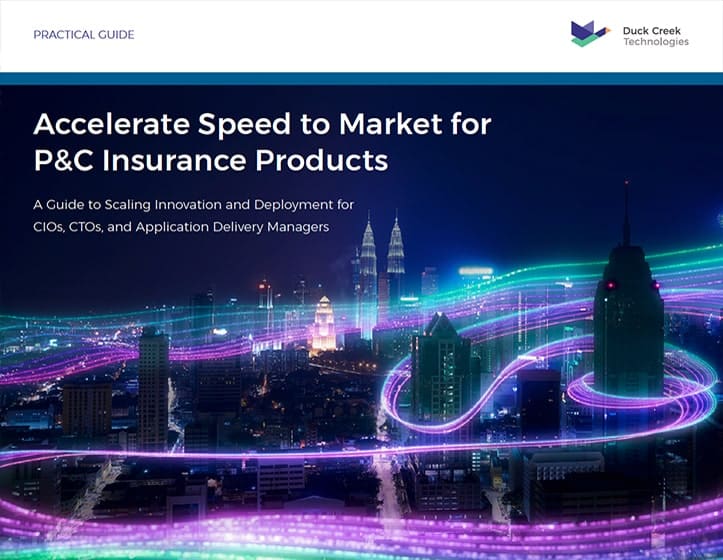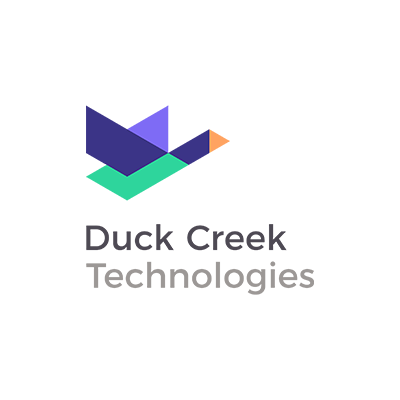In an industry where the pace of change is accelerating, P&C insurance carriers are at a crossroads. The choice is stark: innovate or stagnate. While traditional carriers have long relied on a foundation of legacy systems and outdated processes, today’s market demands more.
From evolving consumer expectations to emerging risks, the challenges are bigger and more complex than ever before. Carriers that fail to embrace innovative P&C Insurance technology are not just falling behind; they are actively risking their ability to adapt and grow.
The path to future-proofing your business is not about minor upgrades, but a fundamental shift in how you operate, compete, and connect with your customers. Read on to learn more about these insurance carrier innovations and how they are creating new opportunities for growth.
How Cloud-Native Technology Future-Proofs Your P&C Business
Navigating today’s dynamic insurance landscape requires a new kind of architecture—one built for speed, adaptation, and growth. For P&C carriers still bound by rigid, on-premises legacy systems, every market shift and surge in demand is a struggle. But the future-proof insurance carrier is already here, and it is built on cloud-native platforms.
This architecture offers a fundamental shift, empowering carriers to move beyond the transaction and embrace a new era of agility and continuous innovation. It is not just about moving to the cloud; it is about fundamentally changing how your business operates to thrive in an unpredictable world.
- The Breakthrough: Cloud-native platforms offer unparalleled scalability, flexibility, and resilience. They are built from the ground up to operate in cloud environments, allowing for rapid deployment, automatic scaling to meet demand, and continuous updates without downtime.
- Legacy Struggle: Traditional, on-prem legacy systems are inherently rigid and difficult to scale. Upgrades are costly, time-consuming, and often disruptive.
- Modern Advantage: Modern cloud-native platforms provide the elastic infrastructure necessary for dynamic operations. They enable insurers to process efficiently at any scale, reduce IT overhead, and ensure high availability for a consistently smooth policyholder experience. This modern advantage focuses investment squarely on insurance carrier innovation.
In fact, according to various industry research and analyst reports, insurers spend as much as 70% of their IT budget on legacy maintenance, leaving little room for new investment.
Solving P&C Integration Challenges with an API-First Approach
Navigating the complex digital landscape requires carriers to be more than just connected—they need to be seamlessly integrated. In the past, achieving this meant wrestling with rigid legacy systems and costly custom builds, a process that created more barriers than connections. The modern solution lies in an API-first architecture, a fundamental design approach that treats every part of the system as an open channel for communication.
This is a crucial shift for carriers looking to evolve, as it transforms a closed system into an open, dynamic ecosystem where integration and growth are not just possible, but effortless.
- The Breakthrough: An API-first (Application Programming Interface) architecture means systems are designed from the outset to connect and communicate seamlessly with other applications. This fosters an open ecosystem, enabling easy integration with external services, partners, and emerging innovative tech.
- Legacy Struggle: Legacy systems often operate in silos with proprietary, closed architectures. Integrating them with new business essentials, such as Loss Control, Reinsurance, Payments, or Distribution Management, is a complex, expensive, and often custom-coded endeavor—leading to fragmented data and disjointed customer journeys.
- Modern Advantage: With an API-first design, modern platforms facilitate effortless integration across the entire insurance ecosystem. This allows for real-time data exchange, streamlined workflows, and the ability to quickly plug into best-of-breed essentials, creating a truly connected and efficient experience.
According to McKinsey & Company, insurers often “underestimate integration challenges and complexity,” which leads to long timelines and escalating costs during modernization projects. (How P&C insurers can successfully modernize core systems, May 2025)
Automating Workflows to Accelerate P&C Insurance Operations
For a long time, the insurance experience was a synonym for “manual” and “slow.” For both staff and policyholders, a simple transaction could involve a frustrating trail of paperwork, phone calls, and data entry. But today’s market demands speed and accuracy.
The answer is intelligent automation, a breakthrough that allows carriers to turn a once-tedious, error-prone process into a seamless, automated workflow. By embracing this insurtech for P&C, carriers are not just eliminating operational burdens; they are fundamentally reshaping the customer experience and building trust through speed and efficiency.
- The Breakthrough: Automation transforms manual, labor-intensive processes into efficient, error-free workflows. This includes everything from automated premium collections and claims disbursements to payments, reconciliation, and compliance checks.
- Legacy Struggle: Legacy systems are often bogged down by manual data entry, paper-based processes, and human intervention at every step. This leads to delays, increased operational costs, higher error rates, and a stressful experience for both staff and policyholders.
- Modern Advantage: Modern platforms leverage intelligent automation to handle routine tasks, transforming a potentially stressful event (like a claim payout) into a trust-building experience with immediate notifications and swift payouts. This significantly reduces labor, operational costs, and the potential for human error.
According to Datos Insights, over 50% of insurers manage claims on legacy platforms, widening the gap between customer expectations and operational capabilities. (Modern Claims Systems: The Competitive Edge for Life, Annuity, and Benefits Insurance, May 2025)
Real-Time Data: The Key to Proactive P&C Decision-Making
Waiting for yesterday’s data to make today’s decisions is a recipe for falling behind. In an environment where every minute counts, P&C carriers can no longer afford the blind spots created by slow, outdated systems. The modern advantage is real-time data, a capability that transforms how insurers operate.
By harnessing the power of real-time information, carriers can move from a reactive posture to a proactive one, making faster, more informed decisions that manage risk, personalize the customer experience, and drive the business forward.
- The Breakthrough: The ability to capture, process, and analyze data in real-time provides immediate insights into customer trends, payment behaviors, and emerging risks, allowing for proactive decision-making.
- Legacy Struggle: Legacy systems typically rely on batch processing, meaning data is updated periodically (daily, weekly, or monthly). This delay creates a significant blind spot, preventing insurers from reacting quickly to payment issues, identifying fraudulent activity as it happens, or understanding immediate customer needs.
- Modern Advantage: Modern platforms are built for real-time data processing, offering immediate insights into customer trends, payment patterns, and emerging risks. This empowers insurers to make faster, more informed decisions, proactively manage risk, and deliver personalized experiences that keep pace with customer expectations.
Celent reports the average time from application to policy issue was 33 days. In contrast, for cases that go through an automated underwriting process, the average cycle time is just 12.5 days. (Life Underwriting – Reaching New Heights, June 2025)
Using AI to Reduce P&C Costs and Combat Fraud
When every decision counts, relying on old data and static rules can be a significant liability. For years, P&C carriers have managed reactively, unable to keep pace with evolving risks and customer expectations. The modern advantage is Artificial Intelligence.
AI is a fundamental shift, moving beyond simple automation to add a layer of intelligence to every transaction. It is the key to proactively managing risk, personalizing the customer experience, and unlocking a new era of data-driven decisions that legacy systems simply cannot match.
- The Breakthrough: AI, including machine learning (ML) and agents, provides the capability to analyze vast datasets, identify patterns, predict outcomes, and automate complex decision-making processes, with human oversight, adding a layer of intelligence to operations.
- Legacy Struggle: Legacy systems lack the computational power and architectural flexibility to integrate and utilize advanced AI models. They rely on static rules and historical data, making them ill-equipped to detect emerging fraud patterns, personalize payment experiences, or make real-time, data-driven decisions.
- Modern Advantage: AI in modern systems can help insurers reduce costs and losses, deliver superior customer experience and boost retention rates, optimize pricing and drive revenue growth.
McKinsey & Company estimates that, for insurers specifically, AI leaders have a 6.1 times higher total shareholder return (TSR) than AI laggards over a five-year period. (Rewired and running ahead: Digital and AI leaders are leaving the rest behind, January 2024)
How to Modernize P&C Insurance
The crossroad is here. In a market where your competitors are already leveraging the cloud, an API-first approach, and real-time data to drive growth, a wait-and-see approach is no longer a viable P&C growth strategy.
The future of the P&C industry belongs to the carriers who embrace modern technology not as a series of minor upgrades, but as a fundamental shift in how they operate. This is not just about survival; it is about seizing a new era of opportunity. It is about building a more resilient, efficient, and profitable business—one that can truly thrive in a world of constant change.
Ready to stop reacting and start innovating? Contact us to explore how our modern platform can help you gain a competitive edge and build a future-ready business.






